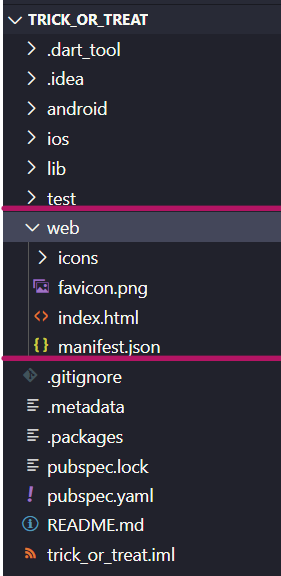Hey, have you ever wanted to host your flutter web build without much work and confusion? I’ve got a small trick for you in here. You can even use your existing repository to host a new flutter web build. We’ll get into the working right away.
Note: In this example, we will host only the release build of the flutter web and update it, rather than the whole flutter project itself on GitHub (which is simple). This will be useful if you want the repository to only contain the web build files used for hosting on GitHub Pages, leaving out the inane junk.
We will be making a trick or treat web app using flutter and host it’s release build on GitHub Pages.

Step 1: Creating a flutter web project.
To create a flutter web project, you have to be in one of the following flutter channels : beta, dev or master. Change your channel and upgrade it, if you were in stable and then proceed to the next step.
Enable support for flutter-web in terminal/command-prompt:
$ flutter config --enable-web
Now, create your flutter project like you usually do and it will have web support. If you want to add web support to an existing project you can use the following command inside the directory:
$ flutter create .

After creating your flutter project, you can check if you have the web directory. It shows that your project supports flutter-web.
The sources for the examples are at the end of this page.
Now, you can also publish it on GitHub.
Step 2: Making your flutter-web build.
You can make a release build for the flutter-web using the command:
$ flutter build web --release
Now, you will have a new directory named build and you will find your web build in it, like this.

Now if you look inside that web folder, you will find the build files. As the dart code trans compiles into javascript code with HTML and CSS, the starting point of the build naturally, is the index.html .
Step 3: Publishing the build to GitHub.
You can now start a new repository or clone a repository you already have in a new folder/location .

This is how the cloned repository will look like (mine is just empty).
Then rename it to web and paste it into flutter-project/build/ directory, before really building the web build.

Now, that you have done everything, you can edit your flutter code just like you want, anytime from the flutter-project and build it. Then the changes can be committed and pushed from flutter-project/build/web . This reduces our worry to handle the build files to host and maintain two different repositories, one for the flutter project and the other exclusively for hosting.
tip: You can add
builddirectory to your.gitignorefile in your flutter project folder to avoid confusion and repetition.
Step 4: Hosting it on GitHub Pages.
After you have successfully pushed the build files you got from the flutter project, go to the repository page. Then, navigate to the settings, you will find a title “GitHub Pages”. Select your source as main branch and save.

That’s it, you have successfully hosted your flutter web build with GitHub pages. Now, you can go to your site and view your beautifully built flutter web app (unlike mine😜), by clicking the link displayed under the same section.
tip: You can also use a custom domain instead of just username.github.io, by specifying a domain in custom domain section, by following the steps here.

You can check the working example here .
Source for the flutter project : Flutter project .
Source for the respective web build : Web build .
You are welcome to find fault and comment it, and I will fix them and edit the article to make it even more awesome. And don’t forget to show some love❤️!!!
HAPPY CODING!
I sincerely do hope that you found this material to be useful and if you did, make sure to like and share this article with fellow Flutter Developers.
If you encountered any issues while following this article or you have a suggestion to make, please leave a comment below and I’ll try my best to reply you.
Thanks for your time 🙌
